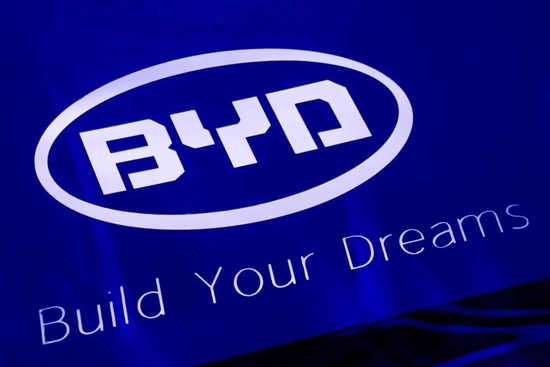
Source: Dao always makes sense
“BYD looks up, there is no opponent in the circle, and it can only go out of the circle to PK tanks”…
“I look up to BYD’s U8 and I hope that BYD can gradually apply the technology of sideways walking to all its models”…
“With these technologies, they can sell more than 100 W, which will directly kill Land Rover, and will also take away some Mercedes-Benz big G customers. BYD rubs against all luxury cars, China is proud”…
A few days ago, at BYD’s press conference, the million-level new energy hardcore off-road U8 and the million-level pure electric performance supercar U9 were simultaneously unveiled. As soon as it appeared on the stage, BYD U8 showed off its skills: U-turn on the spot, lateral movement, floating on the water surface… Whether insiders or outsiders, they all exclaimed at first glance. Moreover, Wang Chuanfu’s sentence “Chinese high-end brands are not just about buying and piling up materials” can easily mobilize the emotions of the Chinese people.
It is worth mentioning that, while BYD’s new car has reached millions of dollars, Tesla suddenly announced a comprehensive price cut on the back foot, and a large-scale rights protection broke out as a result. The two diametrically opposed situations have attracted a lot of applause, but can the luxury car dream of domestically produced cars come true?
distant luxury car dream
I have to admit that the rapid expansion of new energy vehicles is the time when domestic auto brands are closest to the high-end market.
According to the retail data compiled by Shudian Automobile Sales Network, in the first November of 2022, the sales of most luxury brands showed a downward trend. Among them, the sales of Mercedes-Benz, BMW and Audi were 704,000, 694,000, and 577,000, respectively, a year-on-year decrease. The ranges are 0.3%, 9.5% and 9.7% respectively.
On the contrary, new energy vehicle brands such as Weilai, Ideal, and Jikr have gained market share in the price range of 300,000 to 500,000 yuan. According to data from the China Association of Automobile Manufacturers, in the first 11 months of 2022, the sales volume of domestically produced high-end brand passenger vehicles was 3.511 million, a year-on-year increase of 12.7%. According to this trend, domestic independent brands squeeze traditional luxury brands out of the high-end new energy market, and on the other hand begin to replace fuel vehicles in the high-end auto market, shaking the basics of traditional luxury brands.
However, the growth of data does not represent a change at the consumption level. For a long time, traditional car manufacturers such as Mercedes-Benz, Audi, BMW, etc. have experienced hundreds of years of brand precipitation, and have already formed an inherent brand recognition in the hearts of consumers. This cannot be shaken by new energy vehicles only by relying on high-end pricing.
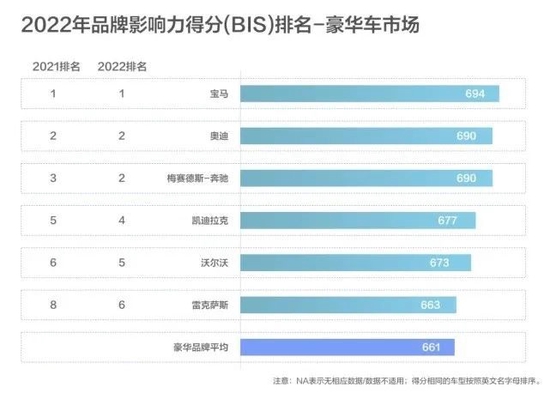
Some time ago, JD. Power released a 2022 China new car purchase intention research report. The report pointed out that luxury brands still lead mainstream brands in terms of brand influence scores. BMW ranked first in the brand influence list in the luxury car market with a score of 694, and Audi and Mercedes-Benz brands tied for second place on the list. In this luxury car market ranking, there is currently no new energy vehicle brand.
Although price is a rigid standard for “luxury or not”, brand is the core that consumers are willing to pay for high-priced cars. Therefore, the high-end domestic self-owned brands may only take the first step.
This is true for luxury cars, and the million-level ultra-luxury car market is even less likely to be “disturbed”. In the 2021 domestic million-dollar luxury car sales ranking, Porsche Cayenne, Mercedes-Benz S-Class and BMW 7 Series rank in the top three with annual sales of 30,000, 25,000, and 22,000, respectively. The top ten are ranked by BMW, Mercedes-Benz , Porsche, Land Rover and other overseas car companies are contracted, and Porsche occupies four seats in the top ten.
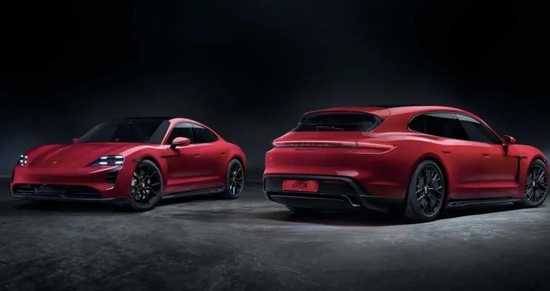
There is also an electric car among them, but it belongs to Porsche, and the Porsche Taycan is the only pure electric model to enter the top ten list.
In fact, even BYD, which is so powerful on the new energy vehicle track, has failed in the high-end market. In 2009, when the price of self-owned brands was generally low, BYD launched the BYD S8 with the highest price of 206,800 yuan, but the sales volume was dismal.
If it was wrong time for BYD to make a high-end car, is it time now?
Isn’t technology king in the luxury car market?
Recently, there are not a few car companies that have increased their stake in the luxury car market. For example, GAC Aian has launched the high-end brand Hyper Haobo, and the price of the Hyper SSR model exceeds one million; it is also reported that Weilai’s high-end car brand has entered the design stage, and the benchmark is the Maybach S-Class.
But if you want to say who has caused the greater repercussions, it is naturally BYD. Under the current background of unprecedented domestic technology admiration, BYD chose to use technology to start the brand’s high-end strategy, which just caters to the general psychological needs of domestic consumers. Not to mention whether it will sell well in the future, at least this press conference has injected a strong technical color into BYD’s high-end cars, which will help shape a new high-end brand.
But the premise is whether this “overturning traditional fuel vehicle” technology can go from concept to landing and mass production.
It can be seen from the press conference that the technical support of the U8, the first mass-produced model of the brand, lies in the “Easy Sifang” technology. The Yisifang technology is based on the independent drive of four motors. Cool skills are realized by these four wheels.
This is not BYD’s original. There is a new car maker in the United States called Rivian. Its two cars—the electric pickup truck R1T and the hardcore off-road vehicle R1S—are also driven by wheel-side motors and have spot steering functions. The maximum wading depth is close to 1 meter. Before BYD looked up to the U8 press conference, Mercedes-Benz announced a Mercedes-Benz EQG. The four wheels are also equipped with independent drive motors, which can rotate 360 degrees continuously in place in the demonstration video.
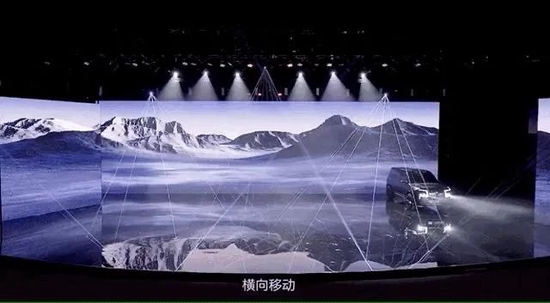
It can be seen from the press conference that BYD’s four-wheel motor independent control technology does have advantages. For example, on asphalt roads and other high-adhesion roads, it can realize the flexible in-situ U-turn function; the lateral movement function shows that “Easy Sifang” has excellent stability control.
But the problem is that whether it is the in-wheel motor used by the Mercedes-Benz EQG or the wheel-side motor technology that looks up to the U8, the “stunts” that the vehicle can bring are most likely due to the effect of the Mecanum wheel. And if it reaches the mass production stage, it is impossible for the manufacturer to install four mecanum wheels on the car, because the mecanum wheels do not have the same friction coefficient, elastic support and comfort as ordinary rubber tires.
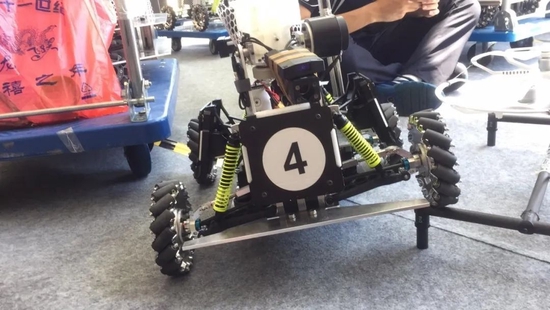
Therefore, consumers have doubts about whether these cool performances will be realized and whether they will be as smooth as the demonstration.
What makes potential purchasers even more uneasy is that BYD did not announce the specific data parameters of U8 at this conference, not even the price and delivery schedule.
For BYD, whose brand influence is less than that of traditional luxury cars, or domestic independent brands, it is undoubtedly easier to attract consumers by taking the technical route of independent research and development, and then create a high-end image cognitively. However, the value of technology is ultimately realized by the product. A technology that stays on display and is difficult to mass-produce, its marketing value is far greater than its actual value. This is the case when looking up to U8 and Mercedes-Benz EQG.
Of course, the difference is that the Mercedes-Benz EQG still has the luxury car brand of Mercedes-Benz to bring a brand premium to it, but it does not look up to the U8.
Does the new energy track need luxury cars?
In the past few years, many car companies and new forces have poured into the new energy track, but the products of most brands only compete at the price of 100,000 to 300,000 yuan, and there are few million-level brands, which means that the market is still There is vast space. Judging from the growth rate, high-end brand passenger cars increased by 20.7% year-on-year, 14.2 percentage points higher than the market. Moreover, low prices mean low profits. Domestic brands such as BYD are deeply aware of this, and it will be a matter of time before they move to high-end.
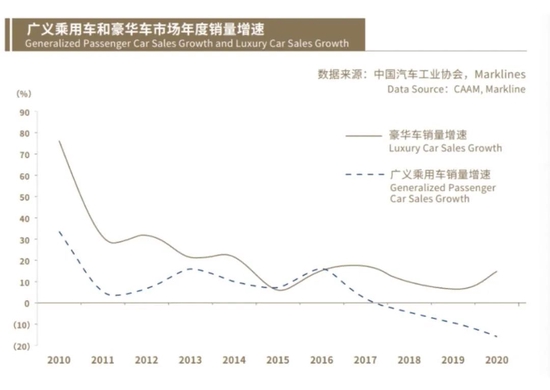
But this is from the perspective of enterprises. From the perspective of the public, do we really need luxury new energy vehicles? This point is actually worth thinking about.
Generally speaking, the price is a rigid standard for the “luxury or not” of a vehicle, but it does not mean that if the price is raised, it can be called a luxury car. A luxury car depends on its history, brand, quality, performance, configuration, etc. Wait. Regardless of the brand and history and culture, the key to a luxury car being a luxury car is that it maximizes the comfort, safety, and quality of the vehicle, and pursues superior performance in the three major components of the engine, gearbox, and chassis. .
And this is based on the high maturity of the traditional fuel vehicle industry chain.
However, with the advent of the new energy era, the three-electric system consisting of batteries, motors, and electronic controls has replaced the original engine, gearbox, and chassis. In the case of obvious shortcomings in power batteries and intelligence, new energy luxury cars do not seem to be worthy of its million-dollar price.
In other words, problems that new energy car companies cannot solve such as limited battery life, troublesome charging, and insufficient intelligence are still lingering on the body of new energy vehicles. Are consumers willing to spend millions for such a car?
Judging from the high-priced cars in the new energy vehicle market, such as coupe Model S, SUV Model X, Porsche Taycan and Gaohe HiPhi X, the reason why these models are expensive is nothing more than cruising range, 100-kilometer acceleration, and intelligence. It’s a fuss, but in fact they have improved a little compared to ordinary models, and they still can’t solve consumers’ worries.
Taking Gaohe HiPhi X 6-seat SUV as an example, the official data shows that its cruising range is 550km, which is not as good as the 556km cruising range of the domestic version of Model 3. In terms of intelligence, although HiPhi has always used it as a selling point, this is also the most complained by car owners. After upgrading HiPhi OS2. The “vehicle-vehicle interconnection” function of the car has also been questioned as a possible violation of user privacy.
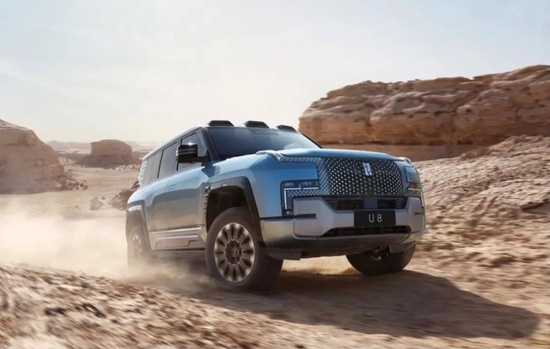
Looking back at BYD, in addition to showing off its skills, BYD has not revealed any core data looking up to U8. It does not know anything about battery technology, cruising range, acceleration to 100 kilometers, charging speed, etc. What is there to be proud of?
Of course, the new energy brand’s exploration of million-level luxury cars may be just a test of high-end water, to test the market response, to test where the potential customer groups are, and judging from the sales volume, there are many people who pay the bill . Taking Tesla as an example, in Q2 of 2022, the global production and delivery of Model S/X will be 16,411 and 16,162 respectively. Among the vehicles with a price of about one million, it can already compete with traditional luxury car brands. .
It’s just that the sales of Tesla’s high-priced cars are based on its global brand power, and consumers are willing to pay for this part of the premium. Other brands of new energy vehicles do not currently have such influence.
BYD may also have enough strength, but the cost-effective label has already been firmly attached to the brand, and it is far more difficult to go from bottom to top than from top to bottom. This seems to be a “common problem” of many domestic independent brands. Unfortunately, there are not a few examples of successful breakthroughs so far.

(Disclaimer: This article only represents the author’s point of view, not the position of Sina.com.)
This article is reproduced from: https://finance.sina.com.cn/tech/csj/2023-01-11/doc-imxzvcvm8930377.shtml
This site is only for collection, and the copyright belongs to the original author.